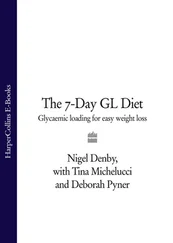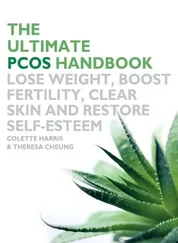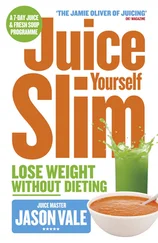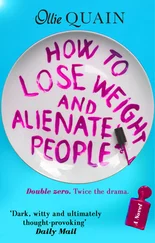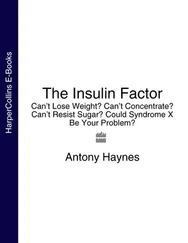We burn energy day and night to perform the basic necessities of life: breathing, digestion, brain function and so forth. The amount of energy burned for these basic functions varies according to a person’s size, age and sex. The larger the person, the harder the body has to work, so the more energy is burned. As we get older, we burn less energy – which may very well be why some of you bought this book in the first place. For the first time in your life, you might be experiencing weight gain.
Most of us do more during the day than simply breathing and digesting food (I hope!). How much more varies. Some of us have physically active jobs. Others spend the day sitting behind a desk. But we all have choices about what we do with our free time. For some, relaxing means lying on the sofa and for others it means going on a bracing hike.
I don’t want you to count every calorie, nor to become a slave to the ‘calories burned’ function on your treadmill. However, you must adjust your eating to accommodate your activity level. It’s just common sense.
Energy intake can be seen as a budget. When you wake up, you get a basic allowance according to your energy needs for the day that you can spend without paying the price of weight gain. All day long you spend this energy budget whenever you eat. If you take some form of exercise, you earn more energy so your budget for food is larger. You can eat more without gaining weight than others who are less active. We’ll talk more about food budget and food choices when we get into the Lunch Box Diet itself, so grab a highlighter and mark up the page here.
For now, let’s go back to our equation. I’m assuming you care less about weight maintenance and a lot more about weight loss. So, in looking at our equation, you can easily see that in order to lose weight, you need to do one of two things – or both.
Reduce what goes in (lower energy intake)
Increase what goes out (burn more energy)
Eat less and burn more energy (preferred)
Seems simple, right? For the most part, it is. But how much should you cut out of your diet in order to lose weight at an optimum rate? Again I don’t want you to count but for the sake of understanding, I’ll tell you a bit more. One pound of body weight is more or less equivalent to 3,500 calories. Rather convenient considering there are seven days in a week. You can quickly see that if you reduce your energy intake by 500 calories a day or burn an additional 500 calories (about a 40-minute jog/run on the treadmill), you should theoretically lose about a pound a week.
You might be tempted to adjust this even more severely to lose weight more quickly. The fact is, in order to lose weight effectively – in other words keep the weight off – slow and steady is the key. There are guidelines to what people say is safe, but we need to remember that, depending on your current weight and the changes to your diet and exercise, weight will drop off at different rates per individual – usually the heavier you are the more initially and then less as your weight comes down closer to maintenance level. What we want to steer away from is a ridiculous calorie chop where you’re taking in a stupidly low amount of calories per day, but don’t worry, that’s not going to happen here! You won’t be able to continue a very low-calorie diet forever and once you resume eating more than carrot sticks and hot water, you’ll gain it back. It also mucks up your metabolism, which we’ll discuss later (see page 25). Fortunately with the Lunch Box Diet, it’s a sustainable plan that you can see working long term as part of your new, happy lifestyle!
The majority of fad diets are nothing more than very low-calorie diets with a gimmick or smoke screen to cover up this fact. Whether you’re told to eat a grapefruit or drink a strange mixture, at the end of the day, you’ve consumed fewer calories, often to the extreme.
At best, there’s a small grain of truth in each theory but only to a minuscule degree. All that these diets do is, once again, cover up the fact that calories are being restricted, no matter what horse and pony show went into making you not eat. And most of the time, you will not be able to stick with it because people, quite simply, get hungry! We like to eat. We don’t usually enjoy hunger pangs, weakness and dizziness. We do enjoy treats like chocolate and crisps. We can go some time without these things but if you ignore a craving long enough, chances are it’ll come back to bite you on the bum and a little craving for a taste of chocolate will snowball into eating an entire box!
Let’s recap:
Healthy weight loss relies on one equation.
Fad diets fail because most are very low-calorie diets (VLCDs for short).
Fad diets fail because they are too stringent.
Fad diets fail because they are not built for the long run.
Fad diets fail because starving yourself will mess with your metabolism! Metabolism? I know what you’re thinking: ‘You said you’d keep it simple!’ I will, I will.
‘When you eat small amounts of food frequently throughout the day (graze) rather than starve yourself, your metabolism remains at optimum fuel-burning level’
Metabolism is the rate at which our bodies burn calories or, in other words, fuel. The higher the metabolism, the faster the fuel is burned. The lower the metabolism, the slower fuel is burned. When you starve yourself, you end up lowering your metabolism.
The best way I can explain how metabolism aids in weight loss is to talk about bears. Huh? You heard me right. A bear spends all summer fattening itself up. It has to fatten up to get through the whole winter without eating. A bear’s metabolism slows way, way down during hibernation. This is the body’s way of preserving all that fat the bear put on last summer. Good for the bear, not so good for you. When was the last time you saw a bear having to wear a backless cocktail dress?
When we starve ourselves, we do the same thing to our metabolism as hibernation does to the bear’s metabolism. Without any new fuel source, your body works as efficiently as possible by lowering its metabolism to conserve any existing fuel. It stores what it can. Conversely, when you eat small amounts of food frequently throughout the day (graze) rather than starve yourself, your metabolism remains at optimum fuel-burning level. It can rely on getting fuel every one to two hours and therefore it burns fuel instead of storing it.
That being said, you can’t eat high-calorie, high-fat food every one to two hours and still lose weight. So, what do you eat? That’s where my diet plan comes into play.
In designing the diet, I knew I wanted my clients to graze but I didn’t want to give them a blanket instruction to eat all day. They needed to eat foods that had a lot of nutritional punch per bite without a lot of calories. They needed something lasting and tasty yet without a ton of calories. Some foods are just fattening and may be low in nutrients. Those are the types of foods that, when consumed regularly, make us fat.
Beyond the Mirror
Overcoming Emotional Eating
Next time you overeator indulge in fattening comfort foods, write down the emotions you are feeling.
When you feel the urge to eat,ask yourself, ‘Am I physically hungry or emotionally hungry?’
Keep temptation out of the fridgeand cupboards. If instant gratification isn’t available, you’re less likely to eat for the wrong reasons.
Go for a walk, run or hit the gym the next time you’re angry, sad or anxious.
Читать дальше




